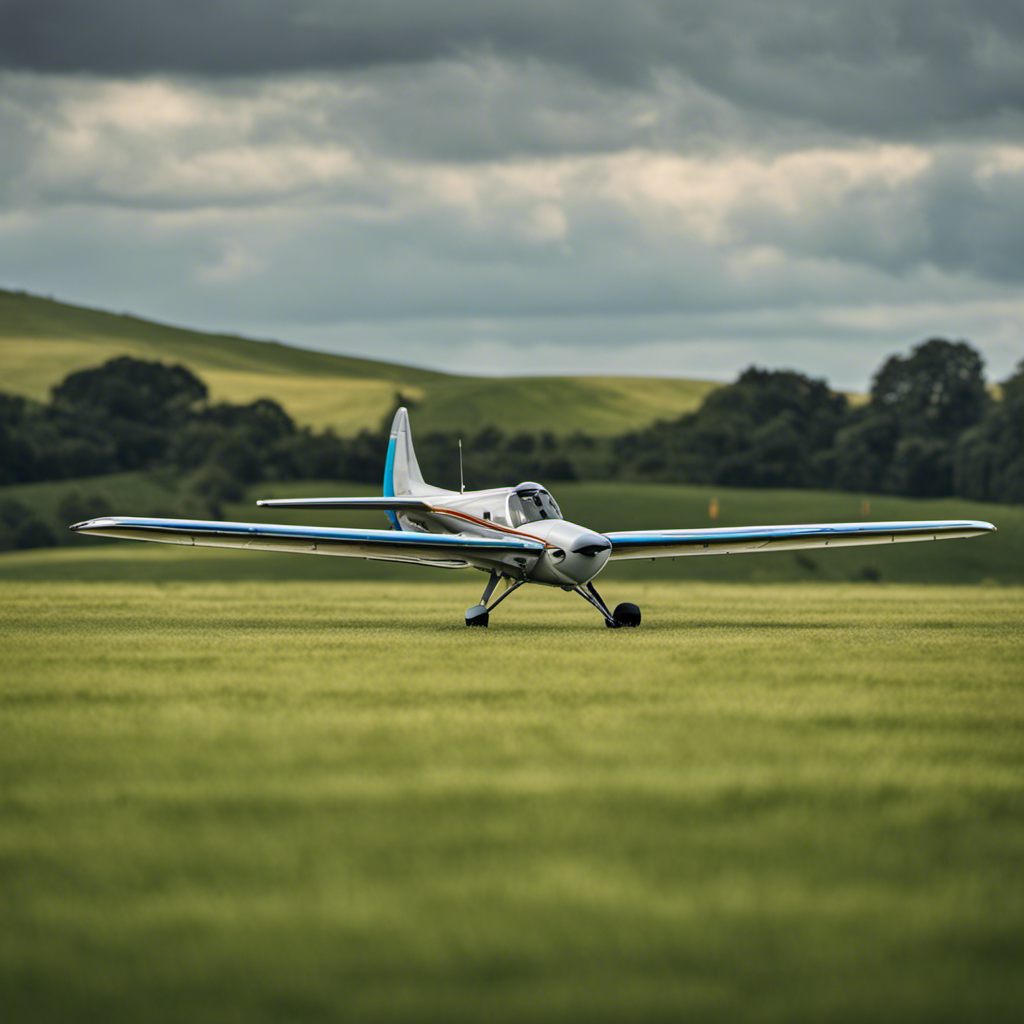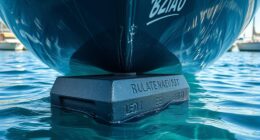So, you’ve decided to take to the skies and experience the exhilaration of gliding. But where do you begin? With so many gliding schools out there, it can be overwhelming to choose the right one.
That’s why I’m here to help. In this beginner’s guide, I’ll walk you through the important factors to consider when selecting a gliding school.
From researching instructors’ qualifications to evaluating safety measures and training programs, we’ll cover it all.
Get ready to soar with confidence as we navigate the world of gliding schools together.
Key Takeaways
- Consider the facilities and equipment offered by gliding schools, ensuring they are well-maintained and provide a safe and comfortable learning environment.
- Take into account the location and accessibility of the gliding school, considering factors such as proximity to home, reduced commute time, and availability of accommodations.
- Assess the qualifications and training programs of the instructors, looking for experience, certifications, and ongoing professional development.
- Analyze the financial aspects of gliding training, including costs of lessons, flight time, equipment rentals, and available financial assistance options such as scholarships, grants, or payment plans.
Researching Gliding Schools
You should start by researching gliding schools in your area to find the best fit for your needs. When it comes to choosing a gliding school, it’s important to consider the facilities they offer and their training schedules.
Gliding school facilities play a crucial role in your overall experience. Look for schools that have well-maintained gliders and a variety of equipment. You want to ensure that the school has a safe and comfortable environment for both learning and practicing gliding techniques.
In addition to facilities, training schedules are another important aspect to consider. Find out how often the school offers classes and whether they have flexible options to accommodate your availability. Some schools may only offer training on weekends, while others may have weekday options as well. It’s important to choose a school that can accommodate your schedule and provide you with ample training opportunities to progress in your gliding skills.
Now that you have an understanding of what to look for in gliding school facilities and training schedules, let’s move on to the next section, which is about location and accessibility. This is an important factor to consider as it can greatly impact your convenience and ease of attending classes.
Location and Accessibility
When choosing a gliding school, there are three important factors to consider. First, proximity to your home is crucial. It determines how easy and convenient it is to get to the gliding school. Second, you should look into transportation options available in the area. This includes public transportation or nearby airports, ensuring you have a reliable way to reach the school. Lastly, understanding the local weather conditions is essential. Gliding heavily relies on favorable weather conditions for safe and enjoyable flights.
Proximity to Home
Living close to a gliding school can make it more convenient for regular practice sessions. Not only does it save me precious time on commuting, but it also allows me to fully immerse myself in the gliding experience. Here are three reasons why proximity to home is important when choosing a gliding school:
-
Reduced commute time: Being close to the gliding school means I can spend more time in the air and less time stuck in traffic. This means I can maximize my practice sessions and make the most out of my training.
-
Availability of accommodations: If the gliding school is near my home, I have the option of staying overnight or accessing nearby accommodations. This makes it easier for me to attend multi-day courses or participate in intensive training programs without the hassle of finding a place to stay.
-
Increased flexibility: Living nearby gives me the flexibility to schedule practice sessions more easily. I can take advantage of good weather conditions or spontaneous free time without having to plan extensively in advance.
Choosing a gliding school close to home not only enhances convenience but also offers practical advantages that can greatly enhance the overall learning experience.
Transportation Options Available
If you’re considering attending a gliding school, it’s important to consider the different transportation options available for getting to the school. Many gliding schools are located in remote areas, making public transportation limited or non-existent. However, some schools may have shuttle services from nearby airports or train stations, so be sure to inquire about this.
If public transportation is not feasible, you may need to consider renting a car or arranging for a private transfer to get to the school. Additionally, it’s important to consider nearby accommodations. Most gliding schools are situated in scenic areas, so there may be a variety of lodging options available, ranging from campsites to hotels. Researching and booking accommodations in advance will ensure a comfortable stay during your gliding experience.
Now that we’ve discussed transportation and accommodations, let’s move on to the next important factor: local weather conditions.
Local Weather Conditions
To prepare for your gliding experience, it’s crucial to check the local weather conditions before heading to the school. Understanding the local weather patterns is essential for ensuring a safe and enjoyable flight. Weather conditions can greatly impact your gliding experience, so staying informed is essential.
Here are three key things to consider when checking the local weather:
-
Wind speed and direction: Knowing the wind conditions is important because gliding relies on wind currents for lift. Strong winds can make gliding unsafe, while calm winds may limit your flying time.
-
Cloud cover: Clouds can indicate the presence of thermals, which are crucial for maintaining altitude during gliding. However, excessive cloud cover may limit visibility and make navigation more challenging.
-
Precipitation: It’s best to avoid flying in wet conditions as rain or snow can affect the glider’s performance and make it more challenging to control.
Instructor Qualifications
One important aspect to consider when choosing a gliding school is the instructor’s qualifications. The instructor’s experience, certification, and qualifications play a crucial role in ensuring a safe and effective learning experience. It is essential to inquire about the instructor’s training programs and their ongoing professional development to gauge their level of expertise.
Gliding instructors should have extensive experience in flying gliders and teaching students. Look for instructors who have logged a significant number of hours in gliders and have a solid track record of successful instruction. Additionally, instructors should hold current certifications and qualifications from recognized aviation authorities.
Instructor training programs are another factor to consider. Find out if the school provides comprehensive training for their instructors, including regular updates on teaching techniques and safety protocols. This ensures that the instructors are up to date with the latest industry standards and can provide high-quality instruction.
The instructor to student ratio is also crucial. Opt for a gliding school that maintains a low instructor to student ratio. This allows for more personalized attention and guidance during your lessons, enhancing your learning experience and safety.
Fleet and Equipment
The gliding school’s fleet and equipment are essential factors to consider when selecting a school. They directly impact the quality of your training experience. The facilities and maintenance procedures of a gliding school can provide valuable insights into their commitment to safety and the overall condition of their equipment.
When evaluating a gliding school’s fleet and equipment, here are three key elements to consider:
-
Well-maintained gliders: A gliding school that prioritizes safety will ensure their gliders are regularly inspected and maintained. Look for a school that follows strict maintenance procedures, such as regular inspections, documentation of repairs, and adherence to manufacturer guidelines. This will give you peace of mind knowing that you are training in properly maintained and safe gliders.
-
Range of aircraft: A diverse fleet of gliders allows for a more comprehensive training experience. Different glider models offer varying flight characteristics, which will help you develop a broader skill set as a pilot. Additionally, a gliding school with a range of aircraft demonstrates their commitment to providing a well-rounded training program.
-
Modern facilities: The condition and quality of a gliding school’s facilities can greatly enhance your training experience. Look for schools that have well-maintained hangars, comfortable briefing rooms, and modern training aids. These facilities not only contribute to the overall ambiance of the school but also reflect the level of professionalism and commitment to training.
Safety Measures and Procedures
When it comes to ensuring safety in gliding schools, there are several key aspects to consider.
First and foremost, the qualifications of the instructors play a crucial role in maintaining a safe learning environment. It is important to inquire about their experience, certifications, and ongoing training to ensure they are equipped to teach and handle any potential emergencies.
Additionally, a comprehensive emergency preparedness plan should be in place, outlining procedures and protocols to be followed in case of an unforeseen event.
Lastly, gliding schools should have proper safety equipment requirements in place, including harnesses, helmets, and emergency parachutes, to ensure the well-being of students during their flights.
Instructor Qualifications
To find a reputable gliding school, it’s important to research the instructor’s qualifications. The instructor’s experience plays a vital role in ensuring a safe and effective learning environment. Look for instructors who have logged a substantial number of flight hours and have a proven track record of successful student outcomes.
Additionally, consider the instructor’s teaching methods. Look for instructors who are known for their patience, clear communication, and adaptability. A good instructor will be able to tailor their teaching style to meet the needs and learning preferences of each individual student.
Remember, the instructor is the key to your gliding journey, so take the time to find someone who is experienced and has a teaching approach that resonates with you.
- Extensive flight hours
- Proven track record
- Adaptable teaching style
Emergency Preparedness Plans
Make sure you familiarize yourself with the emergency preparedness plans before starting your gliding journey.
In any gliding school, safety should always be a top priority. As a beginner, it is important to know how the school handles emergency situations. The school should have well-defined emergency drills in place, ensuring that both instructors and students are prepared for any unforeseen circumstances. These drills should cover various scenarios, such as equipment malfunctions, weather emergencies, or medical incidents.
Communication protocols are also crucial during emergencies. The school should have clear guidelines on how to communicate with instructors and air traffic control in case of an emergency. This ensures that everyone involved is on the same page and can act swiftly and effectively.
Safety Equipment Requirements
Ensure you have the necessary safety equipment before starting your gliding journey. Gliding is an exhilarating adventure, but it is important to prioritize safety at all times.
To ensure your safety and comply with safety equipment standards, make sure you have the following items:
- Helmet: Protect your head from potential impacts during flight.
- Parachute: In case of an emergency, a parachute can be a lifesaver.
- Harness: A secure harness keeps you safely attached to the glider.
These safety equipment items are essential to ensure your well-being during your gliding experience. Additionally, gliding schools have strict training protocols in place to ensure your safety.
They provide comprehensive training on how to properly use and maintain the safety equipment. Pay attention and follow all instructions given during your training sessions.
Training Programs and Curriculum
Choosing a gliding school is important because you’ll want to find one with comprehensive training programs and a well-rounded curriculum. When it comes to learning how to glide, the training techniques employed by the school can significantly impact your progress and overall experience. Look for a school that utilizes modern and effective training techniques such as simulation exercises, hands-on practice, and personalized instruction. These techniques will ensure that you receive the necessary skills and knowledge to become a proficient glider pilot.
Another crucial aspect to consider is how the school tracks your progress. A good gliding school will have a system in place to monitor your development and provide feedback on areas that need improvement. This could include regular progress assessments, flight evaluations, and debriefing sessions. Having a clear understanding of your strengths and weaknesses will allow you to focus on specific areas and make progress more efficiently.
Transitioning into the next section about student reviews and testimonials, it is essential to gather information from previous students about their experiences at the gliding school. Reading about their firsthand experiences and success stories will give you valuable insights into the effectiveness of the training programs and curriculum offered by the school. Hearing from others who have gone through the training can help you make an informed decision and choose the best gliding school for your needs.
Student Reviews and Testimonials
When considering which gliding school to choose, it’s important to gather as much information as possible. In addition to researching training programs and curriculum, it can be helpful to read student reviews and testimonials. These firsthand accounts provide valuable insights into the student experiences and training success at a particular school.
Student reviews and testimonials offer a unique perspective on what it’s like to learn to glide at a specific school. They can highlight the strengths and weaknesses of the training program, as well as provide information about the instructors, facilities, and overall atmosphere. By reading these reviews, potential students can get a sense of what to expect and make an informed decision about where to pursue their gliding education.
Here are three emotional responses that student reviews and testimonials can evoke:
- Excitement: ‘I couldn’t believe the rush of adrenaline I felt when I first soared through the sky!’
- Confidence: ‘The instructors were incredibly patient and supportive, which gave me the confidence to push myself and achieve my goals.’
- Gratitude: ‘I am so grateful for the knowledge and skills I gained at this school. It has truly changed my life.’
Cost and Payment Options
To make your gliding education more affordable, you can explore different cost and payment options available at the school. When considering the cost of gliding training, it’s important to conduct a thorough cost analysis to understand all the expenses involved. This analysis should include the cost of lessons, flight time, equipment rentals, and any additional fees. By understanding the full scope of expenses, you can better plan and budget for your gliding education.
Many gliding schools offer financial assistance options to help students manage the cost of training. These options may include scholarships, grants, or payment plans. Some schools may also offer discounts for bulk lesson purchases or package deals. It’s worth reaching out to the school directly to inquire about any available financial assistance programs.
In addition to financial assistance, some schools may offer payment plans that allow you to spread out the cost of training over a period of time. These plans can help make the cost more manageable by breaking it down into smaller, monthly payments.
When choosing a gliding school, it’s important to consider both the cost and payment options available. By conducting a thorough cost analysis and exploring financial assistance programs, you can make your gliding education more affordable and accessible.
Frequently Asked Questions
Are There Any Age Restrictions for Learning to Glide?
When it comes to learning to glide, age restrictions are a thing to consider. Safety always comes first, right?
Different gliding schools may have different age requirements, so it’s important to do your research. Some schools may have a minimum age limit, while others may require certain physical fitness levels.
It’s all about finding the right balance between safety and enjoyment. After all, we want to soar through the skies with peace of mind, don’t we?
How Long Does It Typically Take to Earn a Gliding License?
On average, it takes around 6-12 months to earn a gliding license. The duration can vary based on factors such as your availability for training and the weather conditions.
The training process consists of both theoretical and practical lessons. You will learn about aerodynamics, flight instruments, and navigation techniques.
Hands-on training will include solo flights and maneuvers. It’s important to find a gliding school that offers a comprehensive and structured training program.
Can I Bring a Friend or Family Member to Watch My Gliding Lessons?
Having a friend or family member watch your gliding lessons can be a thrilling experience! It allows them to witness the excitement and beauty of gliding up close.
However, there are pros and cons to consider. On the positive side, having spectators can provide support and encouragement. On the downside, it may distract both the student and the instructor.
To make the experience enjoyable, it’s important to choose a gliding school that has designated areas for spectators and clear guidelines for their behavior.
Are There Any Opportunities for Advanced Training or Specialization After Obtaining a Gliding License?
After obtaining a gliding license, there are plenty of opportunities for advanced training and specialization.
Many gliding schools offer advanced courses that focus on specific areas such as cross-country flying, aerobatics, or competition flying. These courses allow pilots to further develop their skills and knowledge in their chosen areas of interest.
Additionally, there are also options for pilots to pursue higher-level certifications or become instructors themselves, opening up even more avenues for advanced training and specialization in the world of gliding.
Do Gliding Schools Offer Any Additional Services or Amenities, Such as Accommodation or Transportation Arrangements?
When choosing a gliding school, it’s important to consider the additional services and amenities they offer.
Some gliding schools provide accommodation options, allowing you to stay on-site during your training. This can be convenient and save you the hassle of finding accommodation elsewhere.
Additionally, some schools may offer transportation arrangements, ensuring that you have a convenient way to get to and from the gliding school.
These services can greatly enhance your overall experience and make your training more enjoyable.
Conclusion
After thoroughly researching and considering all the factors, I can confidently say that choosing a gliding school is a life-altering decision. It’s like finding the perfect pair of wings to embark on your soaring adventure.
From the location and accessibility to the instructor qualifications and safety measures, everything plays a crucial role in your gliding journey. So, don’t just settle for any school; choose the one that will make you feel like a majestic bird floating effortlessly in the sky.
Happy gliding!




